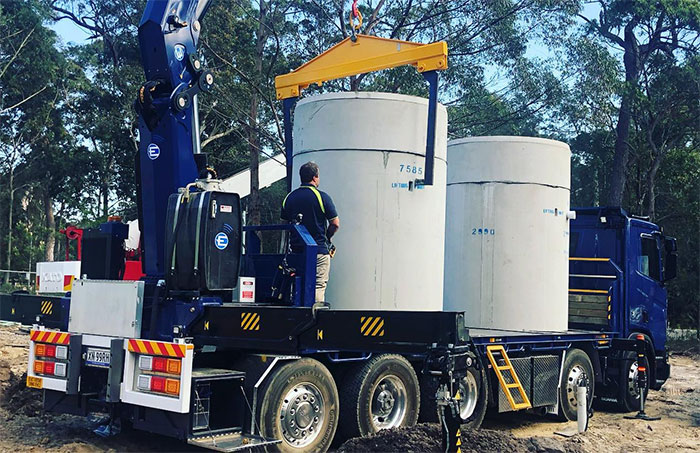Above Ground Vs Underground Water Tanks
Water shortages in Australia have led to the installation of water storage tanks and rain water harvesting systems all over the country. However, the great debate when acquiring a water storage tank is whether to install an above ground or underground water tank.
Underground Tanks
Underground water tanks are typically chosen by people who want to save space. There are many pros and cons of using underground tanks, and we have highlighted a few of them here.
Advantages of underground water tanks
- Saving Space: By installing your water tank under the ground, you have more square footage available for other purposes such as lawns, parking space, outdoor kitchens and others.
- Insulation: the water in the underground tank is not affected by extreme weather conditions. The underground tanks maintain cool temperatures in both winter and summer.
- Security: underground tanks are safe and secure from vandals and harsh weather conditions. There is no risk of deterioration or damage due to extreme heat or strong winds.
Disadvantages of underground water tanks
- Costly: the additional cost of digging a pit and extra plumbing can significantly increase the value of water storage. You may also need to install a water pump to access the water quickly, unlike above ground pumps that can depend on gravity instead.
- Maintenance: if the tank is not fixed correctly and develops cracks (more common in underground concrete tanks) it can be tough to do repairs.
Above Ground Tanks
Above ground, tanks are generally cheaper and easier to install than underground systems. This type of tank is prevalent for people who don’t own the land they live on because they can move with them. Here are just some of the advantages and disadvantages of above ground tanks.
Advantages of Above Ground Tanks
- Easy and affordable installation: Above ground tanks are easy to install and don’t need a lot of plumbing. They are easy to link to your rainwater harvesting system. They can also be built to deliver water to the house under the force of gravity, saving you pumping expenses.
- Flexible location: Above ground, tanks can be installed anywhere on your property. You can save on space by building a platform to raise the tanks or installing them on your roof if the structure can support the full tank’s weight.
Disadvantages of above ground Tanks
- Security: Above ground tanks are vulnerable to vandalism and damage from harsh weather conditions. Strong winds can blow the tank away if it is empty and intense heat can deteriorate or crack the plastic tanks.
- Insulation: water in above ground tanks is usually very cold in winter and hot in the summer. It can be costly to insulate the tanks, and it is easier to heat or cool the water after fetching it.
When choosing the tank that is most suitable for your location and situation, it is important to evaluate all the pros and cons so that you can make a well-informed decision. Moreover, if you have a set preference, knowing the disadvantages of your preferred option can help you to put the appropriate countermeasures in place.
Read Also:
- Factors to Consider When Choosing an Underground Water Tank
- Saving Our Resources By Collecting Rainwater





